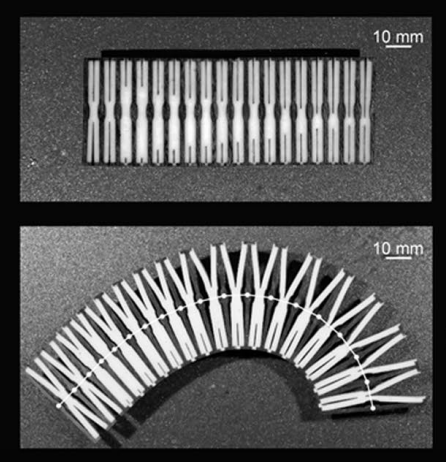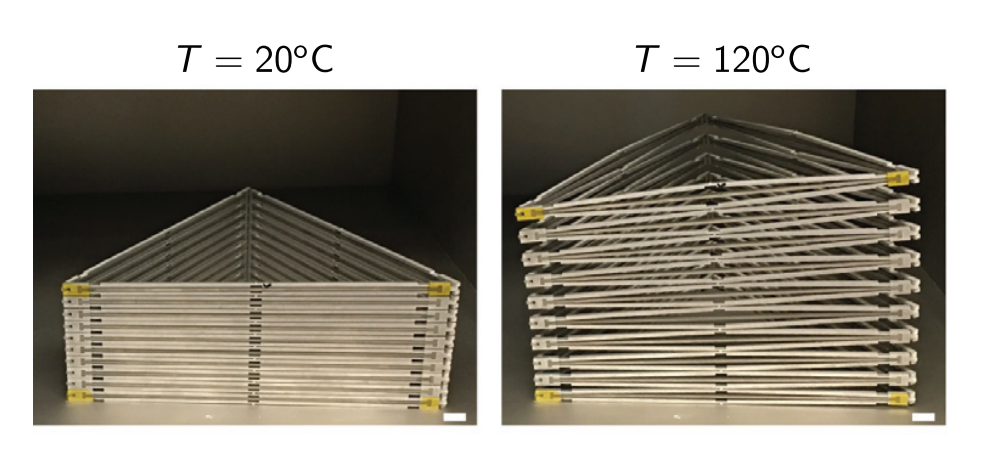
Thermal shape morphing using bi-material kirigami

Morphing structure created by using two materials with different coefficient of thermal expansions
Description
Shape morphing in response to an environmental stimulus, such as temperature, light, and chemical cues, is currently pursued in synthetic analogs for manifold applications in engineering, architecture, and beyond. For instance, by using two materials with different coefficient of thermal expansions, they can be arranged into an architected unit structure to shape-morph on target in response to a temperature stimulus. Thus, these bi-material units can be combined to collectively deploy into a geometrically rich set of periodic and aperiodic shapes that can shape-match a predefined target. This allows for reversible morphing due to mechanics and geometry instead of current strategies relying on material chemistry and fabrication.
Relevant publications
Taniker S, Celli P, Pasini D, Hofmann D, Daraio C, Temperature-induced shape morphing of bi-metallic structures, International Journal of Solids and Structures, Vol. 190, pp. 22-32, 2020.
Liu L, Qiao C, An H, Pasini D, Encoding kirigami bi-materials to morph on target in response to temperature, Scientific Reports, 9, 19499, 2019.
Vigliotti A, Pasini D, Analysis and Design of Lattice Materials for Large Cord and Curvature Variations in Skin Panels of Morphing Wings, Smart Materials and Structures 24(3): 037006, 2015. ![]()